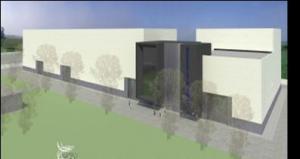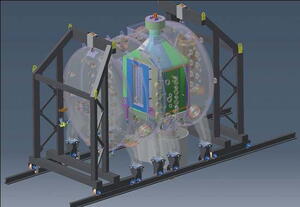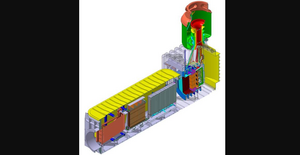Test stands for ITER's neutral beams
When it comes to finding names for new projects, scientists can get quite creative. As we are about to talk about PRIMA (the Padua Research on ITER Megavolt Accelerator) and its two test stands SPIDER (Source for the Production of Ions of Deuterium Extracted from a Radio Frequency plasma) and MITICA (Megavolt ITER Injector and Concept Advancement) we should feel grateful for short and catchy acronyms.
PRIMA is the name of a new test facility for the ITER neutral beams being built at the Consorzio RFX in Padua, Italy. Following the recent endorsement by the ITER Council, the test facility is now entering the construction and procurement phase. The facility requires the construction of new buildings supplied by Italian research institutions covering a surface of two hectares, and the adaptation of the existing 400 kV power substation. The contributing parties are Europe, Japan and India.
Neutral Beam Injection is part of the ITER heating and current drive systems. Its purpose is to deliver a high-energy beam of neutral deuterium atoms that is used for heating the plasma as well as for driving the current and controlling the current profile (read related article from 2008). ITER will be equipped with two neutral beam heating and current drive injectors - each one delivering a deuterium beam of 16.5 MW with particle energies of 1 MeV, and able to operate for long pulses of up to 3600 seconds. A third neutral beam line will inject a 100 keV, 1.5 MW hydrogen beam for diagnostic purposes.
But long before the button is pressed that will turn the heating on, "we have to solve several challenging physics and technology issues," says Piergiorgio Sonato, Project Leader for the team developing the neutral beams test stands. "One crucial issue is the high-voltage gas-insulated transmission lines which connect the power supply to the beam source."
Another equally important aspect is the high voltage holding of up to 1 MV. "Holding a high voltage of 1 MV over a long period of time—and pulses of 3600 seconds as foreseen for the ITER neutral beams are long in this regard—is a challenge in itself," says Senior Technical Officer Beatrix Schunke. "But it also means running the risk of flash-overs, like in lightning."
"Some of the tests run in Padua will be carried out for the first time ever," explains Dhiraj Bora, Deputy Director-General responsible for the heating and current drive in ITER. "These requirements have never been achieved simultaneously," says Sonato, underlining the need of experimental demonstration.
The main mission of the SPIDER test bed at PRIMA is to finalize the development of the ion sources required for the ITER neutral beam injectors, and to test all essential aspects of the diagnostic neutral beam accelerator. SPIDER is therefore designed to test the full-size ITER negative ion source which will be twice as large as the largest existing negative ion source—installed on a test bed at IPP Garching in Germany. SPIDER will be capable of running pulses of up to 3600 seconds at maximum power with hydrogen or deuterium discharges. Thus SPIDER will demonstrate all the critical aspects of the ion sources for ITER's heating and diagnostic neutral beam injectors.
MITICA, on the other hand, is a full-size heating neutral beam injector. MITICA will start operation more than five years before the heating beam will be used on ITER. That will give the team of scientists and engineers at Padua sufficient time to resolve all the problems, expected and unexpected, that might be found when operating this very high power system.
Although PRIMA will concentrate initially on the development of the ITER injectors with a team of scientists and engineers from Europe, Japan and India, and perhaps other ITER Members, it is confidently expected that PRIMA will become a centre of excellence for neutral beam development for the future.
Special thanks to Beatrix Schunke, Ron Hemsworth and Piergiorgio Sonato for their kind cooperation on this article.




